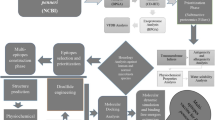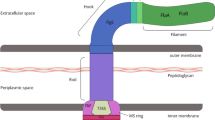Abstract
The reaction of the intestinal immune system to intestinal bacteria shows striking differences between various bacterial strains. Whereas Klebsiella pneumoniae induces a fierce proinflammatory reaction, the probiotic strain Lactobacillus rhamnosus has clear anti-inflammatory effect in gastrointestinal disease and allergy. The molecular basis for this dichotomy is poorly understood but is likely to involve different modulation of antigen-presenting dendritic cells (DC) by L. rhamnosus and K. pneumoniae. Hence we evaluated phenotypic and functional characteristics of DC matured in the presence of L. rhamnosus and K. pneumoniae. Monocyte-derived immature DC were cultured in the presence of live bacteria to obtain mature DC. Both micro-organisms induced maturation of immature DC as shown by CD83 and CD86 expression, but receptors involved in activation of Th1 cells were expressed predominantly on DC exposed to K. pneumoniae. In contrast to K. pneumoniae, maturation with L. rhamnosus resulted in lower TNF-α, IL-6, and IL-8 production by immature DC and lower IL-12 and IL-18 production by mature DC. Moreover, L. rhamnosus led to the development of T cells without a typical Th phenotype whereas K. pneumoniae induced a Th1 immune response, dependent mainly on IL-12 production. Thus our results strongly support the concept that differential modulation of DC explains the differences in the immune response to various bacterial strains and indicates that K. pneumoniae induces Th1 immune responses via DC.






Similar content being viewed by others
Abbreviations
- DC :
-
Dendritic cell
- FACS :
-
Fluorescence-activated cell sorter
- ICAM :
-
Intercellular adhesion molecule
- IFN :
-
Interferon
- IL :
-
Interleukin
- LPS :
-
Lipopolysaccharide
- MFI :
-
Mean fluorescence intensity
- PAMP :
-
Pathogen associated molecular pattern
- Th :
-
T helper cell
- TNF :
-
Tumor necrosis factor
References
Shanahan F (2001) Inflammatory bowel disease: immunodiagnostics, immunotherapeutics, and ecotherapeutics. Gastroenterology 120:622–635
Guarner F, Schaafsma GJ (1998) Probiotics. Int J Food Microbiol 39:237–238
Madsen KL, Doyle JS, Jewell LD, Tavernini MM, Fedorak RN (1999) Lactobacillus species prevents colitis in interleukin 10 gene-deficient mice. Gastroenterology 116:1107–1114
Schultz M, Veltkamp C, Dieleman LA et al (2002) Lactobacillus plantarum 299V in the treatment and prevention of spontaneous colitis in interleukin-10-deficient mice. Inflamm Bowel Dis 8:71–80
Dieleman LA, Goerres MS, Arends A et al (2003) Lactobacillus GG prevents recurrence of colitis in HLA-B27 transgenic rats after antibiotic treatment. Gut 52:370–376
Kalliomaki M, Salminen S, Poussa T, Arvilommi H, Isolauri E (2003) Probiotics and prevention of atopic disease: 4-year follow-up of a randomised placebo-controlled trial. Lancet 361:1869–1871
Kalliomaki M, Salminen S, Arvilommi H, Kero P, Koskinen P, Isolauri E (2001) Probiotics in primary prevention of atopic disease: a randomised placebo-controlled trial. Lancet 357:1076–1079
Gionchetti P, Rizzello F, Venturi A et al (2000) Oral bacteriotherapy as maintenance treatment in patients with chronic pouchitis: a double-blind, placebo-controlled trial. Gastroenterology 119:305–309
Shanahan F (2002) Probiotics and inflammatory bowel disease: from fads and fantasy to facts and future. Br J Nutr 88 [Suppl 1]:S5–S9
Madsen K, Cornish A, Soper P et al (2001) Probiotic bacteria enhance murine and human intestinal epithelial barrier function. Gastroenterology 121:580–591
Rescigno M, Urbano M, Valzasina B et al (2001) Dendritic cells express tight junction proteins and penetrate gut epithelial monolayers to sample bacteria. Nat Immunol 2:361–367
Steinman RM, Hawiger D, Liu K et al (2003) Dendritic cell function in vivo during the steady state: a role in peripheral tolerance. Ann N Y Acad Sci 987:15–25
Jong EC de, Vieira PL, Kalinski P et al (2002) Microbial compounds selectively induce Th1 cell-promoting or Th2 cell-promoting dendritic cells in vitro with diverse th cell-polarizing signals. J Immunol 168:1704–1709
Moser M, Murphy KM (2000) Dendritic cell regulation of TH1-TH2 development. Nat Immunol 1:199–205
Jonuleit H, Schmitt E, Steinbrink K, Enk AH (2001) Dendritic cells as a tool to induce anergic and regulatory T cells. Trends Immunol 22:394–400
Hampe J, Cuthbert A, Croucher PJ et al (2001) Association between insertion mutation in NOD2 gene and Crohn’s disease in German and British populations. Lancet 357:1925–1928
Ogura Y, Inohara N, Benito A, Chen FF, Yamaoka S, Nunez G (2001) Nod2, a Nod1/Apaf-1 family member that is restricted to monocytes and activates NF-kappaB. J Biol Chem 276:4812–4818
Velde A te, van Kooyk Y, Braat H et al (2003) Increased expression of DC-SIGN+IL-12+IL-18+ and CD83+IL-12-IL-18- dendritic cell populations in the colonic mucosa of patients with Crohn’s disease. Eur J Immunol 33:143–151
Kruis W, Schutz E, Fric P, Fixa B, Judmaier G, Stolte M (1997) Double-blind comparison of an oral Escherichia coli preparation and mesalazine in maintaining remission of ulcerative colitis. Aliment Pharmacol Ther 11:853–858
Rembacken BJ, Snelling AM, Hawkey PM, Chalmers DM, Axon AT (1999) Non-pathogenic Escherichia coli versus mesalazine for the treatment of ulcerative colitis: a randomised trial. Lancet 354:635–639
Dunne C, O’Mahony L, Murphy L et al (2001) In vitro selection criteria for probiotic bacteria of human origin: correlation with in vivo findings. Am J Clin Nutr 73:386S-392S
Maroncle N, Balestrino D, Rich C, Forestier C (2002) Identification of Klebsiella pneumoniae genes involved in intestinal colonization and adhesion using signature-tagged mutagenesis. Infect Immun 70:4729–4734
Tiwana H, Walmsley RS, Wilson C et al (1998) Characterization of the humoral immune response to Klebsiella species in inflammatory bowel disease and ankylosing spondylitis. Br J Rheumatol 37:525–531
Horing E, Gopfert D, Schroter G, von Gaisberg U (1991) Frequency and spectrum of microorganisms isolated from biopsy specimens in chronic colitis. Endoscopy 23:325–327
Lanzavecchia A, Sallusto F (2000) From synapses to immunological memory: the role of sustained T cell stimulation. Curr Opin Immunol 12:92–98
Cella M, Scheidegger D, Palmer-Lehmann K, Lane P, Lanzavecchia A, Alber G (1996) Ligation of CD40 on dendritic cells triggers production of high levels of interleukin-12 and enhances T cell stimulatory capacity: T-T help via APC activation. J Exp Med 184:747–752
Langenkamp A, Messi M, Lanzavecchia A, Sallusto F (2000) Kinetics of dendritic cell activation: impact on priming of TH1, TH2 and nonpolarized T cells. Nat Immunol 1:311–316
Hilkens CM, Kalinski P, de Boer M, Kapsenberg ML (1997) Human dendritic cells require exogenous interleukin-12-inducing factors to direct the development of naive T-helper cells toward the Th1 phenotype. Blood 90:1920–1926
Smits HH, de Jong EC, Schuitemaker JH et al (2002) Intercellular adhesion molecule-1/LFA-1 ligation favors human Th1 development. J Immunol 168:1710–1716
Jiang Q, Akashi S, Miyake K, Petty HR (2000) Cutting edge: lipopolysaccharide induces physical proximity between CD14 and toll-like receptor 4 (TLR4) prior to nuclear translocation of NF-κB. J Immunol 165:3541–3544
Chow JC, Young DW, Golenbock DT, Christ WJ, Gusovsky F (1999) Toll-like receptor-4 mediates lipopolysaccharide-induced signal transduction. J Biol Chem 274:10689–10692
Gu Y, Kuida K, Tsutsui H et al (1997) Activation of interferon-gamma inducing factor mediated by interleukin-1beta converting enzyme. Science 275:206–209
Ghayur T, Banerjee S, Hugunin M et al (1997) Caspase-1 processes IFN-gamma-inducing factor and regulates LPS-induced IFN-gamma production. Nature 386:619–623
Fantuzzi G, Puren AJ, Harding MW, Livingston DJ, Dinarello CA (1998) Interleukin-18 regulation of interferon gamma production and cell proliferation as shown in interleukin-1beta-converting enzyme (caspase-1)-deficient mice. Blood 91:2118–2125
Ten Hove T, Corbaz A, Amitai H et al (2001) Blockade of endogenous IL-18 ameliorates TNBS-induced colitis by decreasing local TNF-alpha production in mice. Gastroenterology 121:1372–1379
Banchereau J, Paczesny S, Blanco P et al (2003) Dendritic cells: controllers of the immune system and a new promise for immunotherapy. Ann N Y Acad Sci 987:180–187
Sellon RK, Tonkonogy S, Schultz M et al (1998) Resident enteric bacteria are necessary for development of spontaneous colitis and immune system activation in interleukin-10-deficient mice. Infect Immun 66:5224–5231
Kuhn R, Lohler J, Rennick D, Rajewsky K, Muller W (1993) Interleukin-10-deficient mice develop chronic enterocolitis. Cell 75:263–274
Yang S, Tamai R, Akashi S et al (2001) Synergistic effect of muramyldipeptide with lipopolysaccharide or lipoteichoic acid to induce inflammatory cytokines in human monocytic cells in culture. Infect Immun 69:2045–2053
Takeuchi O, Akira S (2001) Toll-like receptors: their physiological role and signal transduction system. Int Immunopharmacol 1:625–635
Bulut Y, Faure E, Thomas L, Equils O, Arditi M (2001) Cooperation of Toll-like receptor 2 and 6 for cellular activation by soluble tuberculosis factor and Borrelia burgdorferi outer surface protein A lipoprotein: role of Toll-interacting protein and IL-1 receptor signaling molecules in Toll-like receptor 2 signaling. J Immunol 167:987–994
Schesser K, Spiik AK, Dukuzumuremyi JM, Neurath MF, Pettersson S, Wolf-Watz H (1998) The yopJ locus is required for Yersinia-mediated inhibition of NF-kappaB activation and cytokine expression: yopJ contains a eukaryotic SH2-like domain that is essential for its repressive activity. Mol Microbiol 28:1067–1079
Palmer LE, Hobbie S, Galan JE, Bliska JB (1998) YopJ of Yersinia pseudotuberculosis is required for the inhibition of macrophage TNF-alpha production and downregulation of the MAP kinases p38 and JNK. Mol Microbiol 27:953–965
Acknowledgements
The study is supported by an educational grant from Numico Research B.V. There is no conflict of interest on the part of any of the authors regarding this research presented here.
Author information
Authors and Affiliations
Corresponding author
Rights and permissions
About this article
Cite this article
Braat, H., de Jong, E.C., van den Brande, J.M.H. et al. Dichotomy between Lactobacillus rhamnosus and Klebsiella pneumoniae on dendritic cell phenotype and function. J Mol Med 82, 197–205 (2004). https://doi.org/10.1007/s00109-003-0509-9
Received:
Accepted:
Published:
Issue Date:
DOI: https://doi.org/10.1007/s00109-003-0509-9




